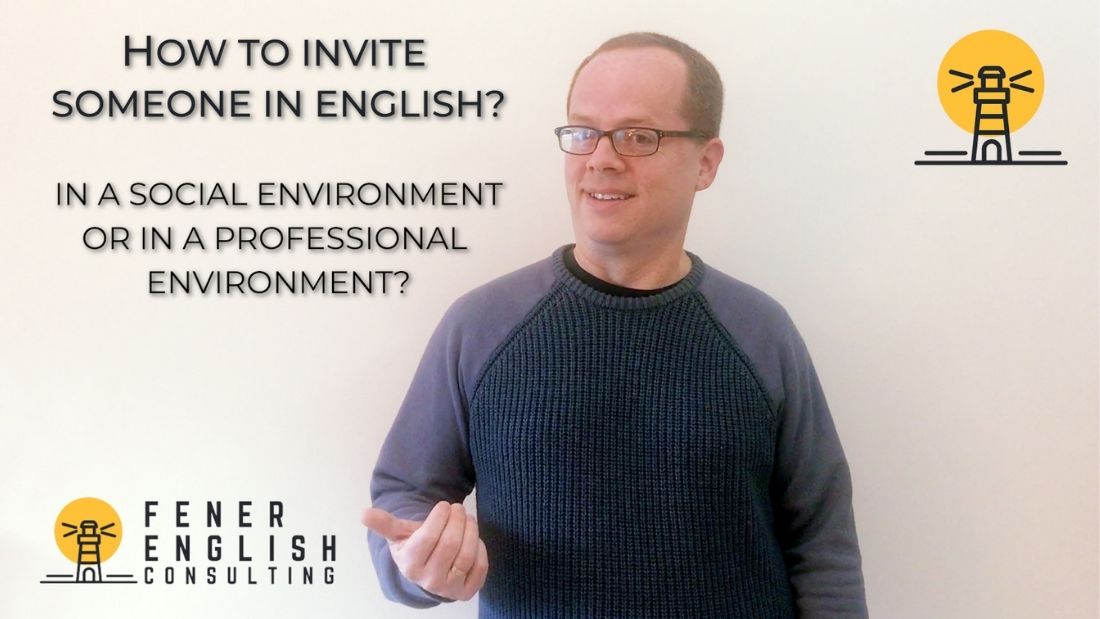
Inviting Someone in English
Inviting someone to do something in your native language can already seem difficult sometimes, but even more so in a non-native language.
Watch this video and use the practice exercises below to help you feel confident giving invites to your English speaking friends whether in professional or social settings!

Time's up
6. You need to schedule a meeting with the regional manager of your company who lives in a different city. You are already planning to be in that city next week for 3 days for a conference. Write out a message that you would send to your regional manager to schedule a meeting with him or her during those 3 days.
7. You need to schedule a meeting with a co-worker (not an authority figure) at
your company who works in a different department to plan for a new project. Write
out a message that you would say or send to your co-worker to schedule a meeting with him or her.
8. For extra practice, make a sentence using one or more of the vocabulary words below.
Vocab Words:
1) Read Between the Lines – to look for or discover a meaning that is implied or hidden instead of stated directly
2) Direct – clear, honest and straight to the point; many direct questions will have a clear “yes” or “no” answer
3) Indirect – avoiding direct mention or statement of your subject or goal
4) To pressure someone – to try to make someone to do something whether they really want to or not, often using guilt or an appeal to someone’s pride
5) Non-Verbal Communication – all communication other than speaking that happens in our interactions; the most common forms are facial expressions and body language
6) Authority Figure — a person who has or represents the power or right to give orders or make decisions in your life or job
7) Open Invitation — an invitation to go somewhere or do something at any time, not just a specific time. In Turkey, most neighbours have an open invitation to drop by for tea.
8) TBD/TBC — an abbreviation meaning “to be determined” (America) and “to be confirmed” (England), used when announcing an event or meeting whose specific date and time are not yet decided
9) Indefinite plans — often used in social situations, these are plans that don’t yet have specific details. For example, your family and another family could have indefinite plans to go on a vacation together sometime this year. When and where are not yet decided.
10) To move forward — in a relationship or work context, it means to develop the relationship (between people, or between a company and a client) so that it is stronger, or more clear, or more committed.
Ready to start using these words and phrases in your everyday English? Download the flashcard deck and start speaking like a native English speaker today!
Shadowing Exercise:
Shadowing Exercise:
Shadowing Exercise Transcript:
Hey, it was great talking to you. I’d love to have coffee again sometime.
I eat at this restaurant every Thursday. Maybe we can chat again next week.
I’d like to meet with the whole team on Thursday at 11:00.
Can you gather the management team and be in my office in 10 minutes?
We’d love to have you over for dinner next week.
Response / Challenge Question:
Can you make a sentence using two or more of the vocabulary words above?

